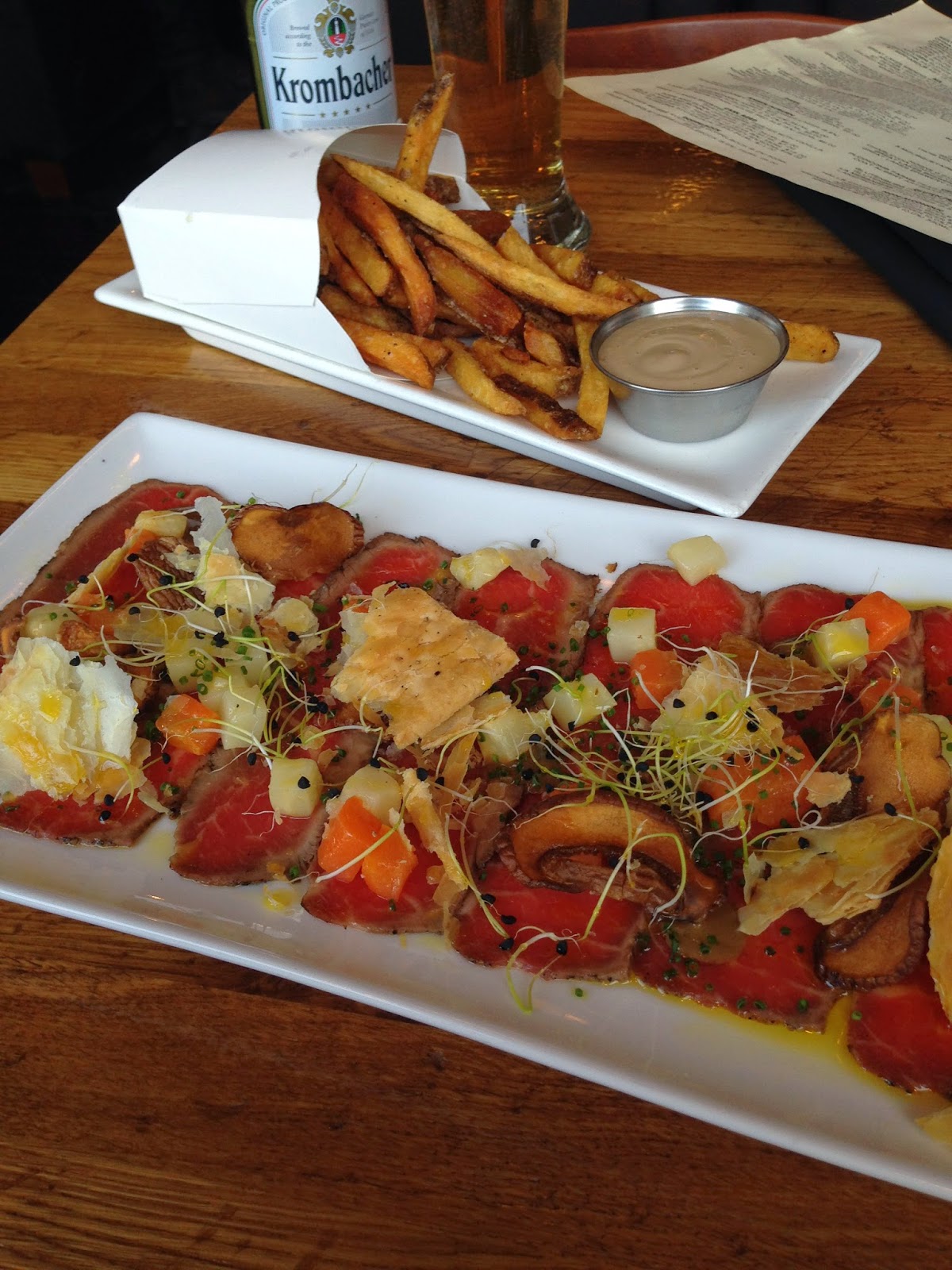Recently, I took a bistro classics cooking class at The Urban Element. The class was taught by Patricia Larkin, the chef at The Black Cat Bistro, a restaurant specializing in French bistro fare. The class taught us to make a number of the items which appear on The Black Cat Bistro's menu, dispelling fears that all French food is fussy and demanding, and out of the reach of most home cooks. While I don't see myself often throwing together a brioche here at home, one of the dishes I have put into regular rotation is the poisson en papillote.
This is my fish from the class:
There is much about this dish that appeals. The vibrancy of the colours. The gorgeous aroma as you open the packet. The fact that it is really quite a healthy dish. And, most of all, its versatility. Every single pickerel en papillote made that night was a little different in the end because each person put their own together, based on their own preferences. A dish that I can change based on my mood and on what ingredients are available appeals greatly to me.
Essentially, the dish is a piece of fish, generally a white fish, resting on a bed of vegetables and aromatics, then loosely sealed in a parchment paper bag and baked in the oven until the fish is just cooked. Cozy in the parchment paper bag, the fish steams, taking on some of the flavours of what is sealed in with it, liquids are released from fish and veg, blending with the dab or oil and/or butter to form a heavenly broth/liquor in the bottom of the bag.
To start, you need small pieces of vegetables, something that will cook enough - but not overcook - in the 20 minutes or so it takes for the fish to cook. If you want potatoes in your bag, you'll need to parboil them. Using the julienne setting of my peeler (pictured), I made zucchini strings as my base. (Momentary digression: I LOVE this peeler. I generally detest peeling vegetables and resist making any dish that will require me to peel. This peeler is causing me to rethink my position on peeling. Comfortable in the hand, it makes quick work of peeling, and has different blades for different effects. The end.)
To the zucchini strings, I added fennel, spinach, arugula, shallots, cherry tomatoes, and a pinch of salt and pepper. Right before laying the fish on it's bed, I added a couple of dill fronds.
I used halibut when making it at home. A fairly thick filet, known for its firm, fine texture. But pretty much any white fish would do. A pat of butter (olive oil works, too, or even a bit of both), more salt and pepper, a squeeze of lemon or lime.
To seal, fold the parchment paper over, and start rolling and crimping to work your way around the open side. You don't want it too tight, but you do want a decent seal so that the steam and liquid won't escape, letting the fish dry out. 350 degree oven for 20 minutes or so. Thicker fillets may need longer time. Something thinner, like sole, would not need as much. If you're not sure, it is easy enough to cut a small slit in the back to check the doneness of the fish. If it needs more time, pinch the slit closed and slide it back in the oven.
It is quite easy to slide it from the parchment packet onto a plate. Or you can simply serve it in the packet and eat it from the bag.
As we head into summer, when vegetables are at their height, I imagine what delightful variations I can make on this dish. I think sweet corn kernels may go quite nicely. Celeriac might work. Baby carrots. Ginger might work for some flavour, depending on what else I put in it. A splash of wine or liquor instead of a squeeze of citrus. The possibilities are endless.
For updates and observations, follow me on Twitter! @culinarykira











































